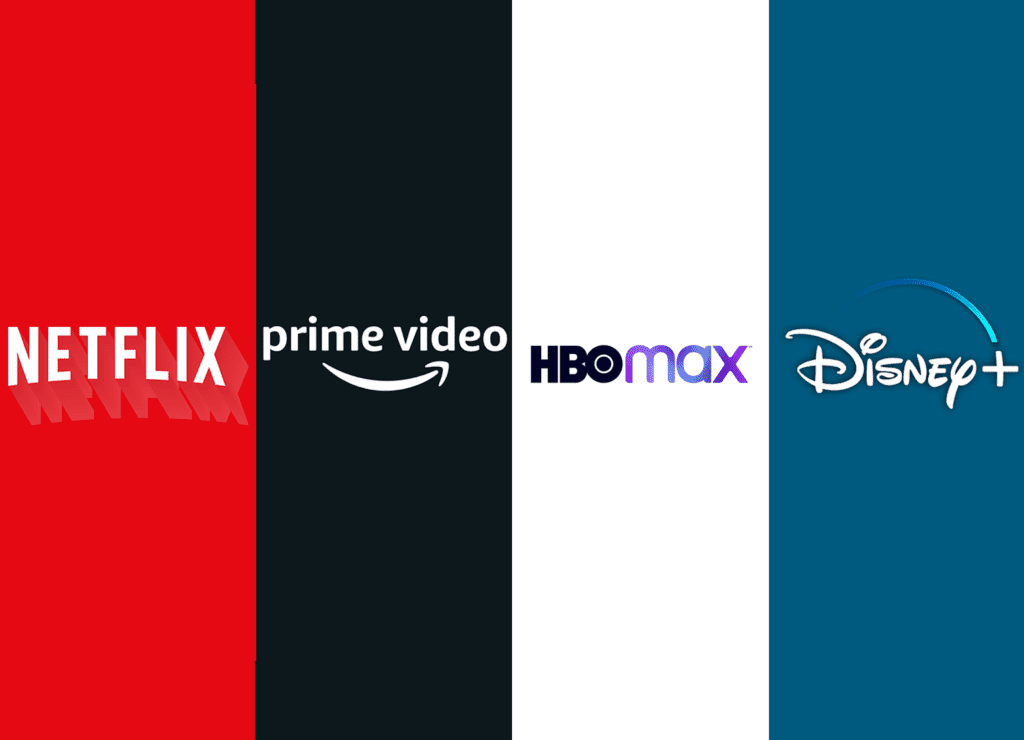The entertainment industry is in the midst of a dramatic transformation, fueled by the rise of streaming platforms. As companies like Netflix, Amazon Prime Video, Disney+, HBO Max, and others continue to battle for dominance, the “streaming wars” have intensified. This competition is reshaping how content is created, distributed, and consumed, with big tech companies increasingly influencing the future of cinema. What once seemed like a niche way to watch TV shows and movies has now become a central pillar of the entertainment ecosystem. For viewers, this translates into an abundance of choices, while for the industry, it’s a high-stakes game that could determine the future direction of cinema.
Original Content and Exclusive Rights have become the weapons of choice in this streaming war. As traditional cable and movie theaters face declining viewership, streaming services are positioning themselves as the primary source for entertainment. To attract and retain subscribers, platforms have invested heavily in original programming, including TV series, films, and documentaries. This content is often exclusive, meaning it’s only available on a particular service, creating an incentive for consumers to sign up for multiple platforms to access their desired shows and movies. For example, Netflix continues to dominate with its vast library of original series like Stranger Things and The Witcher, while Disney+ offers exclusive rights to the Marvel Cinematic Universe, Star Wars content, and classic Disney films.

This shift has also disrupted the traditional film release model. Films that once would have had a theatrical debut are now skipping the cinemas in favor of streaming premieres. In 2021, for example, Warner Bros. made a bold move by releasing its entire slate of films simultaneously in theaters and on HBO Max, a strategy that garnered mixed reactions but reflected the evolving landscape of film distribution. This approach has been adopted by others, as streaming services increasingly see themselves not just as distributors but also as producers of content, offering a platform for big-budget films and indie projects alike.
The streaming wars have also spurred technological innovations aimed at improving the user experience. From recommendation algorithms that personalize content to 4K streaming, interactive content like Netflix’s Bandersnatch, and virtual cinema screenings, streaming platforms are constantly finding new ways to engage users and keep them loyal. The introduction of Dolby Vision, HDR, and immersive audio enhances the at-home viewing experience, ensuring that consumers don’t feel like they’re sacrificing quality when watching from their couches. Additionally, interactive storytelling, where viewers can make choices that influence the plot, has become a popular feature, offering a more immersive experience that mimics the traditional theater but with the added flexibility of home viewing.
For viewers, this streaming revolution means more choices than ever before. The ability to access a vast library of movies and TV shows from anywhere and on any device has fundamentally altered the way we consume media. This convenience is particularly appealing in a world where people are increasingly busy and crave on-demand, personalized content. Streaming platforms are no longer just competing for the best movies or hottest TV shows—they are competing for time and attention. As a result, the traditional concept of “what’s in theaters” is slowly being replaced by “what’s available on my streaming service.”
However, this streaming explosion hasn’t been without its complications. With so many platforms offering exclusive content, viewers face the dilemma of needing to subscribe to multiple services in order to access the full range of content they desire. This can quickly become expensive, and some users may find themselves overwhelmed by the sheer number of platforms, each with its own subscription fee. This fragmentation is one of the growing pains of the streaming wars, as it risks alienating potential customers who might prefer an all-in-one package.
For the film industry, these changes are a double-edged sword. While streaming services provide an outlet for creative projects and have democratized access to content, they also present challenges for traditional studios and theaters. The financial success of a film is no longer solely determined by its box office performance. Now, streaming platforms are driving revenue models based on subscriber growth, advertising, and viewership data. This shift has led to debates about the long-term sustainability of the movie theater business, with some questioning whether cinemas will be able to survive in an age of digital streaming.
Moreover, streaming services are beginning to exert significant control over the types of stories that are told. Data-driven content decisions, informed by user preferences and viewing patterns, mean that studios and platforms often prioritize genres or types of stories that will appeal to the largest audience. While this can lead to more targeted content that resonates with viewers, it may also stifle creative risks, as platforms become increasingly focused on producing safe bets with mass appeal. This shift raises questions about the future of cinematic artistry, as streaming services may prioritize algorithm-driven content over bold, unconventional filmmaking.In conclusion, the streaming wars have ignited a new era of media consumption that is transforming the film industry. As big tech companies continue to shape the future of cinema, the industry is being forced to adapt to a rapidly changing landscape. For viewers, this means an ever-expanding universe of content to explore, but it also raises important questions about the balance between convenience and quality, accessibility and exclusivity. The streaming wars are far from over, and their outcome will have lasting implications for how movies are made, distributed, and enjoyed in the years to come.










